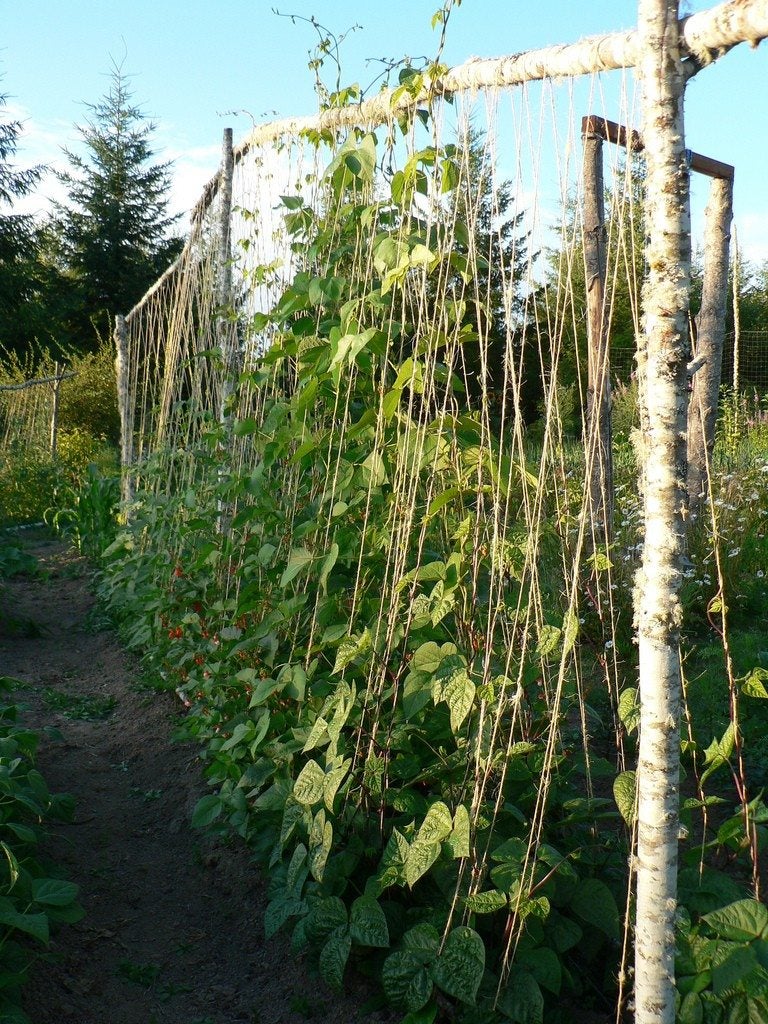How To Stake Peas - Information On Supporting Pea Plants


When your vining type peas begin to show growth, it's time to think about staking peas in the garden. Supporting pea plants directs the growth of the pea vine, keeps it off the ground and makes picking peas a little easier, as the pea plant support makes the pods more visible.
How to Stake Peas
How to stake peas will be determined by the variety of pea you plant and how tall it gets. Some peas climb to just 3 feet (90 cm.), while others reach over 6 feet (1.8 m.). Knowing the height your peas will reach helps when it comes to deciding the best way to support pea plants.
Pea Plant Support Options
The cheapest and often the best way to support pea plants is by using materials you already have.
- Stakes in the ground can be small limbs that have fallen from woodland trees, old PVC pipe or any sturdy wooden stake of 4 to 10 feet (1.2 to 3 m.). Place stakes every few feet behind your peas and string a sturdy cotton twine along the middle and tops of the stakes. The twine is an adequate pea plant support. You may find some vines climbing the stakes.
- Old farm fencing or chicken wire is another means of supporting pea plants. Locate the fencing close enough to growing peas that they can reach it easily.
- Nylon mesh attached to stakes is another way of supporting pea plants.
- A trellis-like wooden structure is a means of staking peas in the garden, but may be more permanent than other methods of supporting pea plants. As pea plants should be planted in a different area each year, you might want to use a more portable means of staking peas in the garden. If you desire a permanent trellis to beautify the vegetable garden, plant other vining crops in that area when rotating peas each year.
- Metal rods can be used as a means of staking peas in the garden. A straight, fence-like structure can be erected for supporting pea plants.
- A teepee shaped trellis is an attractive way of staking peas in the garden. Blooms of growing pea plants are sometimes attractive, so provide a complementary means of staking peas in the garden.
Gardening tips, videos, info and more delivered right to your inbox!
Sign up for the Gardening Know How newsletter today and receive a free copy of our e-book "How to Grow Delicious Tomatoes".

Becca Badgett was a regular contributor to Gardening Know How for ten years. Co-author of the book How to Grow an EMERGENCY Garden, Becca specializes in succulent and cactus gardening.
-
 Looking For Plants To Give You The Soft And Fuzzies? Try These 5 Fuzzy Leaf Plant Options
Looking For Plants To Give You The Soft And Fuzzies? Try These 5 Fuzzy Leaf Plant OptionsLovers of texture, drama, silver foliage and tactile plants will adore these special sensory garden additions. These fuzzy leaf plant options will leave you all aglow
By Susan Albert
-
 Get Ready For A Summer Of Hummers! Grow These Full Sun Hummingbird Plants and Flowers
Get Ready For A Summer Of Hummers! Grow These Full Sun Hummingbird Plants and FlowersIf you’re lucky enough to enjoy a sunny backyard, make sure you are maxing out on your pollinator opportunities and grow these full sun hummingbird plants and flowers
By Tonya Barnett